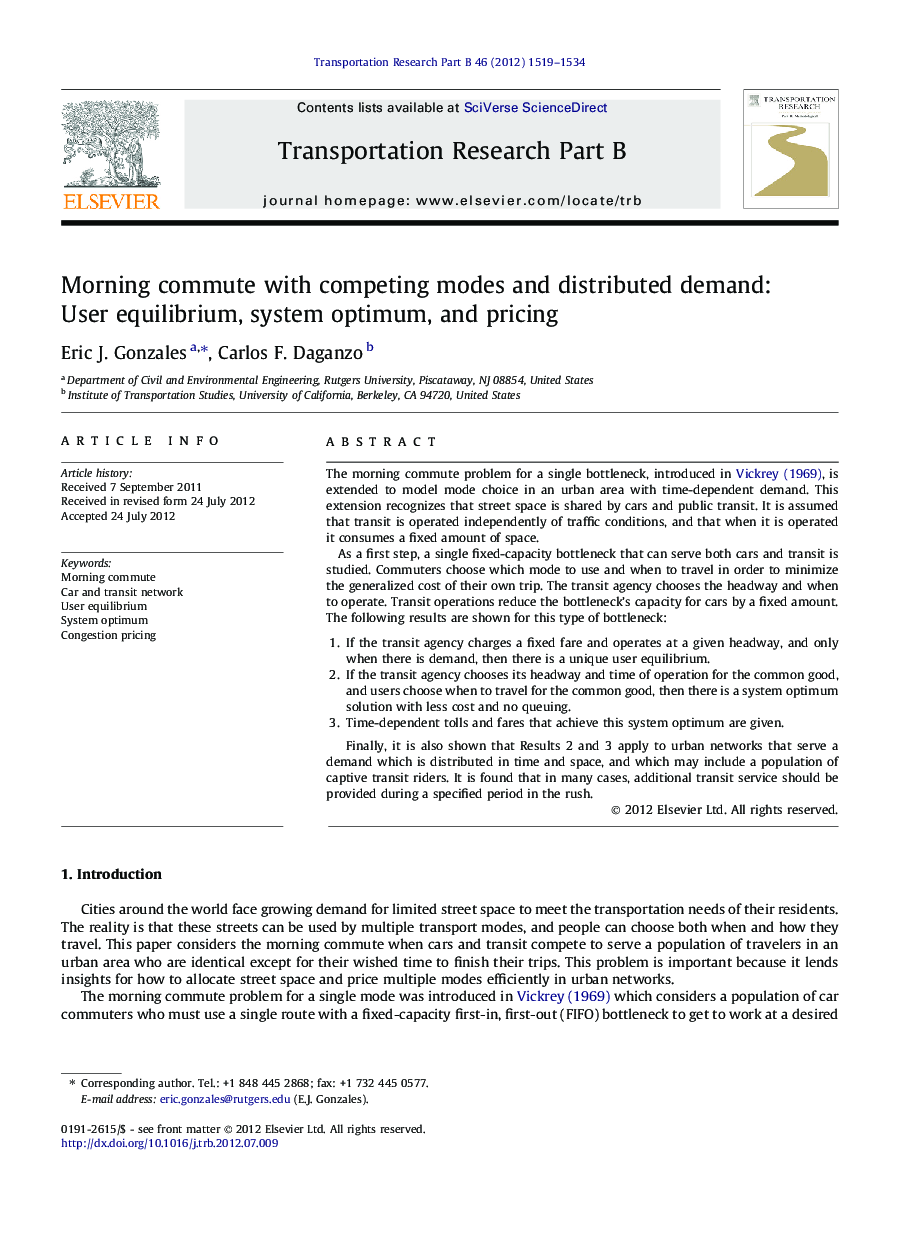| کد مقاله | کد نشریه | سال انتشار | مقاله انگلیسی | نسخه تمام متن |
|---|---|---|---|---|
| 1132354 | 955773 | 2012 | 16 صفحه PDF | دانلود رایگان |

The morning commute problem for a single bottleneck, introduced in Vickrey (1969), is extended to model mode choice in an urban area with time-dependent demand. This extension recognizes that street space is shared by cars and public transit. It is assumed that transit is operated independently of traffic conditions, and that when it is operated it consumes a fixed amount of space.As a first step, a single fixed-capacity bottleneck that can serve both cars and transit is studied. Commuters choose which mode to use and when to travel in order to minimize the generalized cost of their own trip. The transit agency chooses the headway and when to operate. Transit operations reduce the bottleneck’s capacity for cars by a fixed amount. The following results are shown for this type of bottleneck:1.If the transit agency charges a fixed fare and operates at a given headway, and only when there is demand, then there is a unique user equilibrium.2.If the transit agency chooses its headway and time of operation for the common good, and users choose when to travel for the common good, then there is a system optimum solution with less cost and no queuing.3.Time-dependent tolls and fares that achieve this system optimum are given.Finally, it is also shown that Results 2 and 3 apply to urban networks that serve a demand which is distributed in time and space, and which may include a population of captive transit riders. It is found that in many cases, additional transit service should be provided during a specified period in the rush.
► Morning commute equilibrium is unique if users choose car or bus, and departure time.
► The model recognizes that transit may take away street capacity for cars.
► System optimum is found recognizing that the population may include captive bus users.
► Time-dependent tolls, fares and bus headways that yield this system optimum are given.
► The system optimum and pricing results apply to networks as well as bottlenecks.
Journal: Transportation Research Part B: Methodological - Volume 46, Issue 10, December 2012, Pages 1519–1534